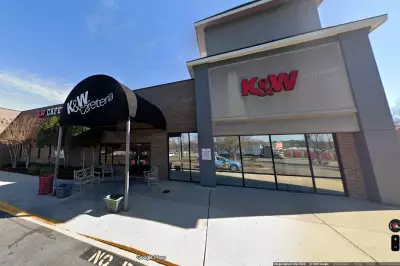
Jason Bonsall, a devoted father from Greater Manchester, has opened up about the humiliating reality he faces every time he visits his local supermarket. At 6ft 5in tall and weighing 24 stone, the standard shopping trolleys simply don't accommodate his frame, turning what should be a simple chore into a daily struggle.
'It's incredibly frustrating and embarrassing,' Jason explains. 'I have to lean over at an awkward angle just to push the trolley, which leaves me in agony for days afterwards. My back and shoulders pay the price every time I need to do the food shop.'
The Physical Toll of Everyday Shopping
Jason's situation highlights a significant gap in retail accessibility. While supermarkets have made strides in disability access with electric scooters and wheelchair-friendly trolleys, there remains a lack of consideration for larger-bodied individuals.
The physical consequences are very real:
- Chronic back pain from constant bending
- Shoulder strain from awkward pushing positions
- Limited mobility for days after shopping trips
- Added difficulty managing his two young children while shopping
A Call for Retail Inclusion
Jason isn't asking for special treatment - just equal access. 'I see parents with young children using trolleys with higher handles, and electric scooters for those with mobility issues,' he notes. 'Why can't there be something for people like me? We're just trying to buy our groceries like everyone else.'
His experience has resonated with many across the UK who face similar challenges. The conversation has sparked calls for supermarkets to consider more inclusive trolley designs that accommodate people of all sizes and abilities.
The Bigger Picture: Accessibility Matters
This situation raises important questions about how accessible our public spaces truly are. While visible disabilities are increasingly accommodated, those with less obvious physical challenges often find themselves overlooked.
Jason's message to retailers is clear: 'A simple adjustment to trolley design could make such a difference to so many people's lives. It's about dignity and being able to perform basic tasks without pain or embarrassment.'
As awareness grows, pressure mounts on major supermarkets to address this gap in their accessibility offerings, ensuring that shopping remains an accessible activity for every customer, regardless of size or physical stature.





